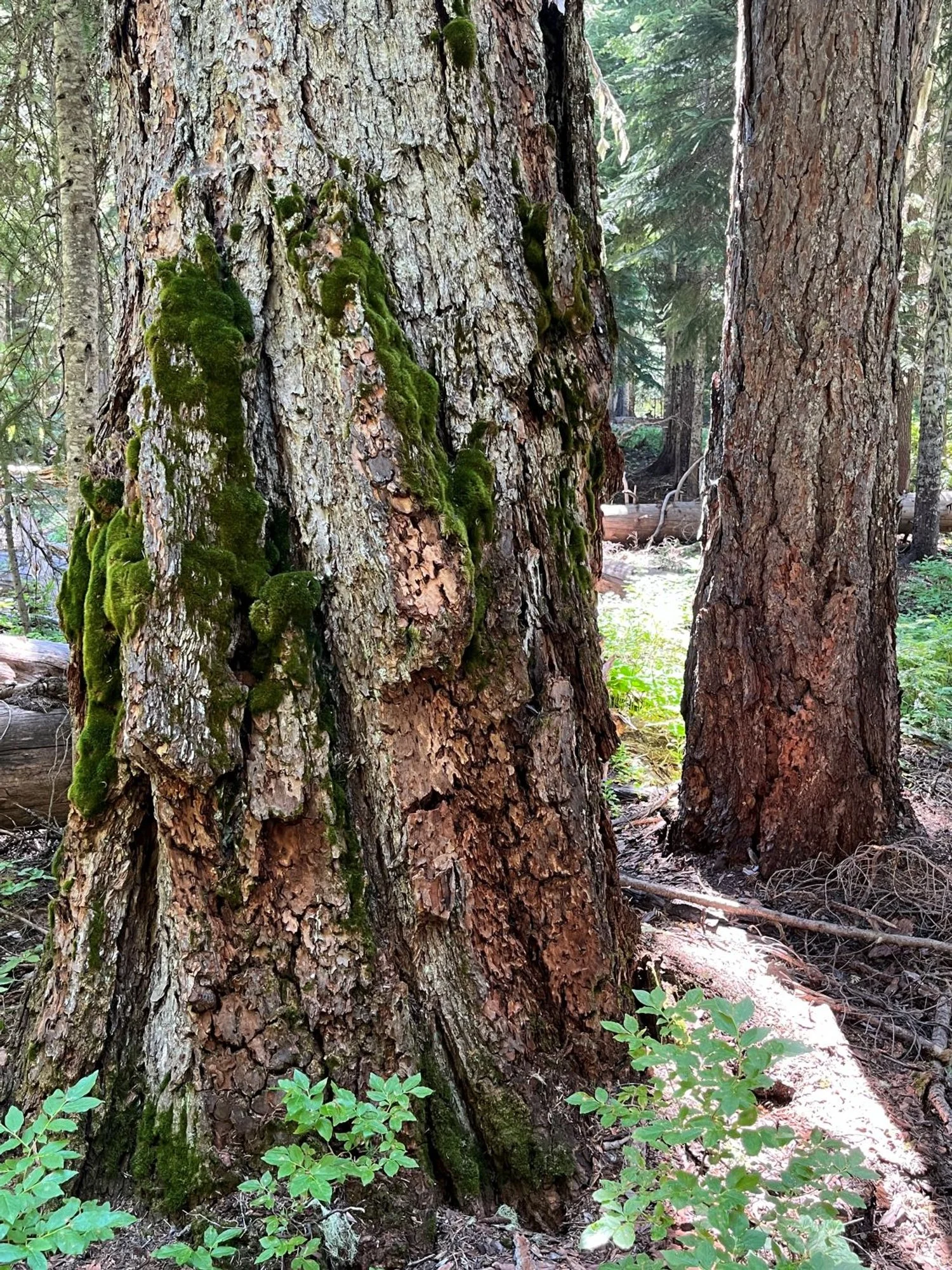
34. Fret Creek
Summary
Length 2 ¼ miles one way
Difficulty Moderate
Season Summer to early autumn
Elevation range 4,600 – 5,800 feet
Human imprint Minimal (Badger Creek Wilderness)
Information Mount Hood National Forest (Barlow Ranger District)
Primary old growth features
Old western larch and mountain hemlock in a remote setting.
Description
A hike along Fret Creek showcases old western larch, a unique deciduous conifer scattered along the creek and across the hillslopes near the trail. Fret Creek basin is in the northern, seldom-visited fringe of the Badger Creek Wilderness; weekday hikers will likely have the place to themselves. The hike ends along the ridgeline to the south where a massive rock outcrop provides a birds-eye perch peering into the heart of the Wilderness.
Orange-barked western larch is quite distinctive, especially when the soft, lime-green clusters of needles turn yellow in the fall. The ability of old larches to survive fire through thick, fire-resistant bark, and the ability of young larches to grow rapidly in open sunlight post-fire, earned western larch a niche of its own in the historic fire cycle.
Although larch seems to have fared particularly well historically on higher elevation, north-facing slopes east of Mt. Hood, old larches have been slowing dying out of this and similar stands. Fire exclusion and the introduced larch casebearer, a leaf-mining moth caterpillar, have contributed to this decline. Unfortunately, conditions have changed to such a degree from fire exclusion and climate change that the next fire may have quite uncharacteristic effects.
Head southwest up the Fret Creek Trail (456A) crossing and re-crossing the small stream three times before reaching Oval Lake just short of two miles up the trail. There are a couple of steep pitches at the beginning and near the lake, but otherwise the trail follows a moderate grade. Veteran western larch can be found in pockets and as isolated individuals all the way to the lake. Mountain hemlock, Pacific silver fir and Engelmann spruce are common associated species.
Continue past the lake, curving to the left (east) through a lovely headwall populated by stout mountain hemlock. The trail intersects the Divide Trail (458) at the ridgeline where impressive rock formations offer spectacular views over the Wilderness to the south. The tops of Mt. Hood and Lookout Mountain are visible to the west. Be careful around the rocks; it’s a long way down.
30 years of change
Western larch has continued to die out of the stand; otherwise only small-scale changes are noticeable.
How to get there
From Highway 35, turn northeast onto FR 44 (Brooks Meadow Road) about 25 miles south of the town of Hood River (13 ¼ miles north of the Highway 26/Highway 35 junction). Turn right onto FR 4420 in 8 ½ miles, then continue straight onto FR 2730 in another 2 miles. Fifteenmile Campground (“Forest Camp”) is on the left 2 miles later, and trailhead parking is on the left a few hundred yards past the campground.

Western larch by Fret Creek
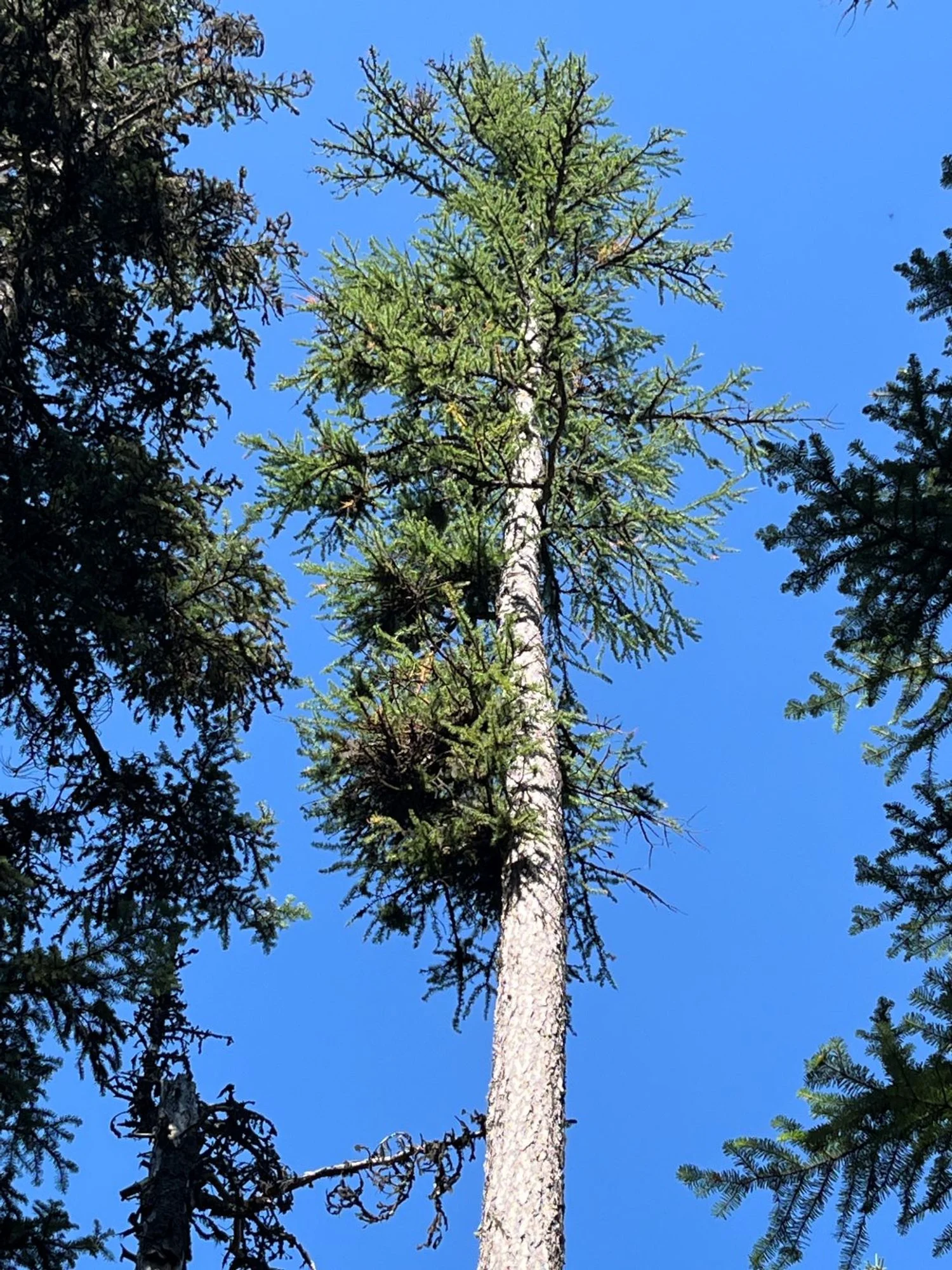
Distinctive western larch crown
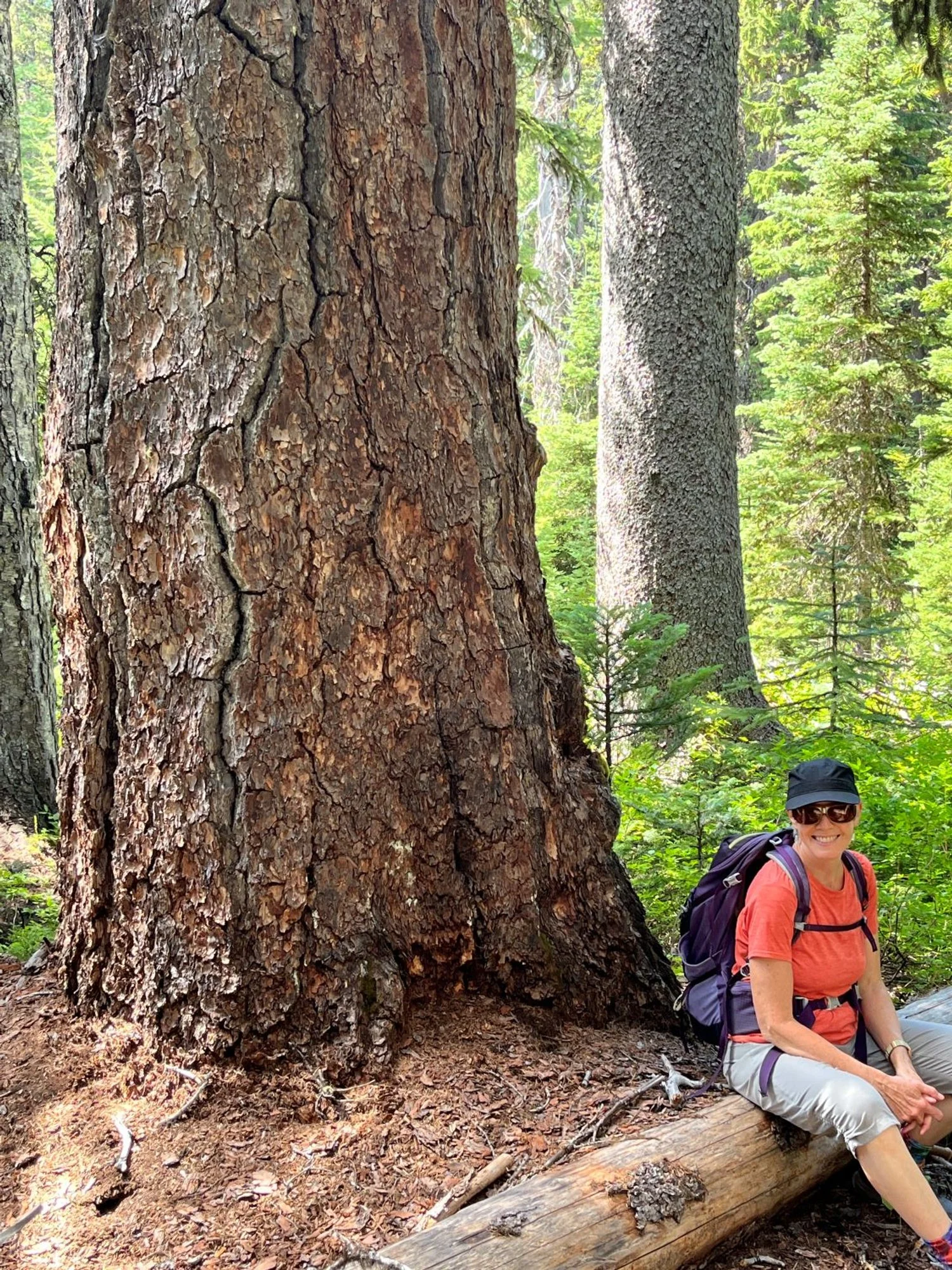
Giant larch and a happy hiker
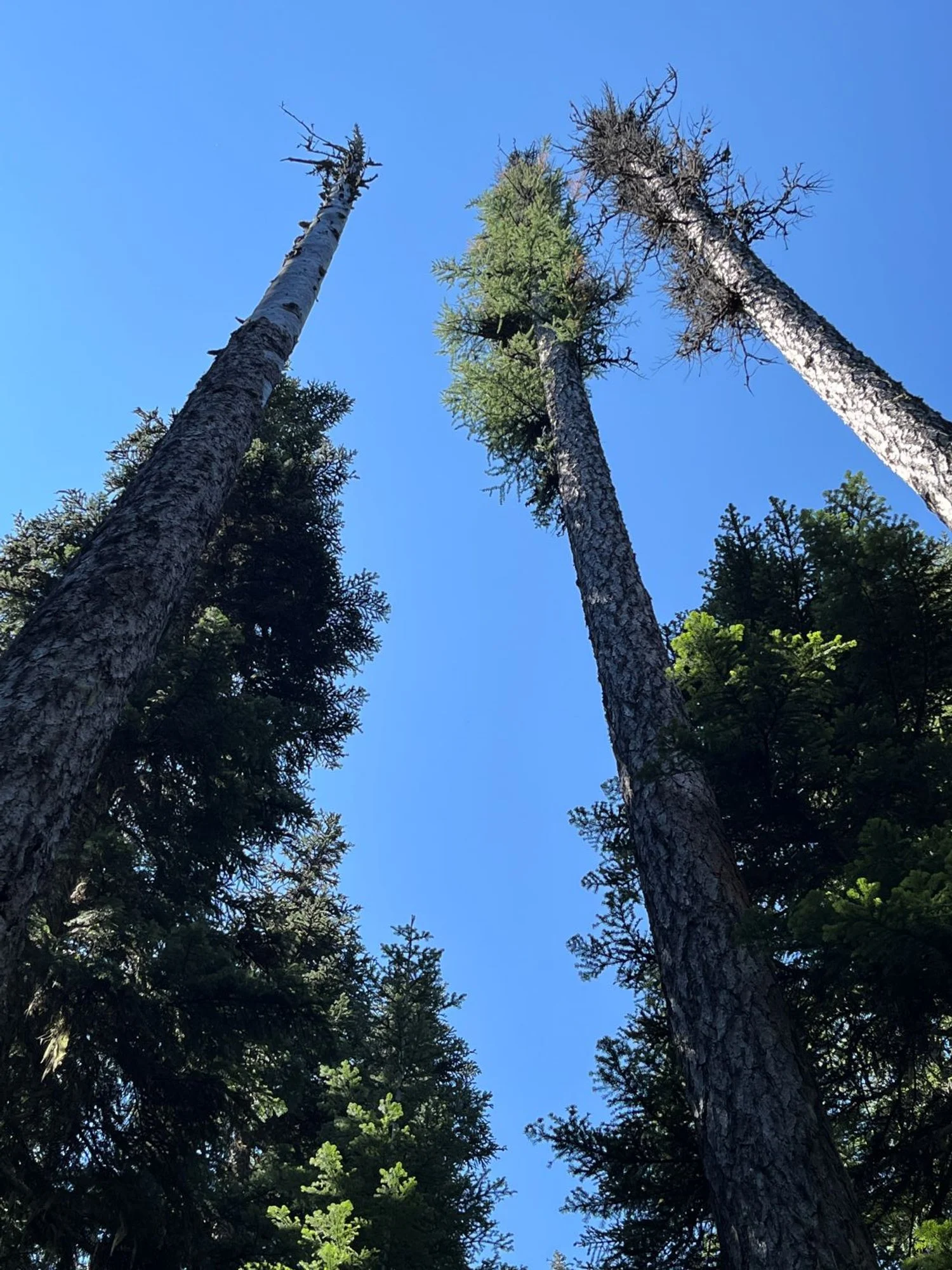
Larch are dying out
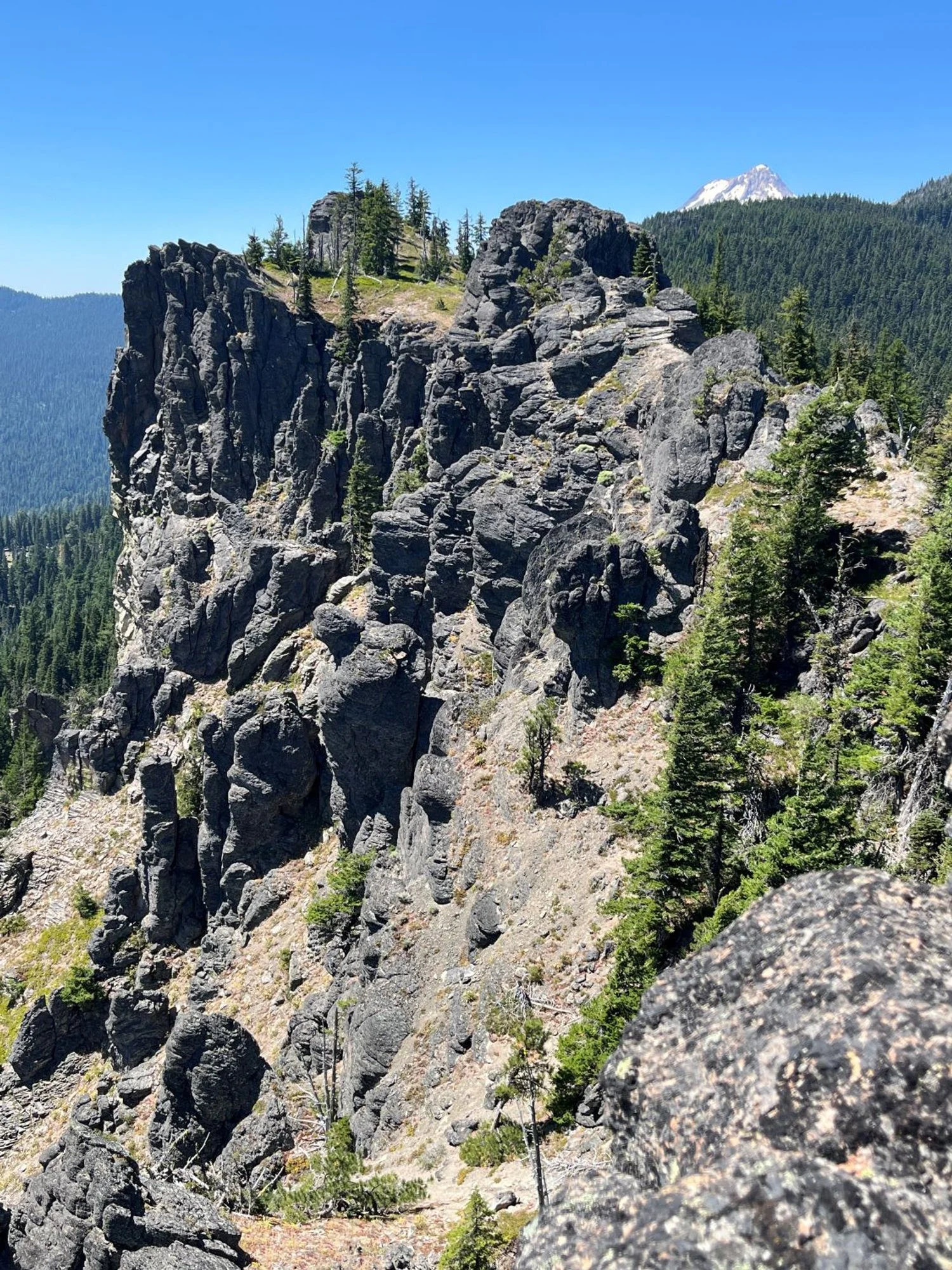
Mt. Hood peaking over the ridge
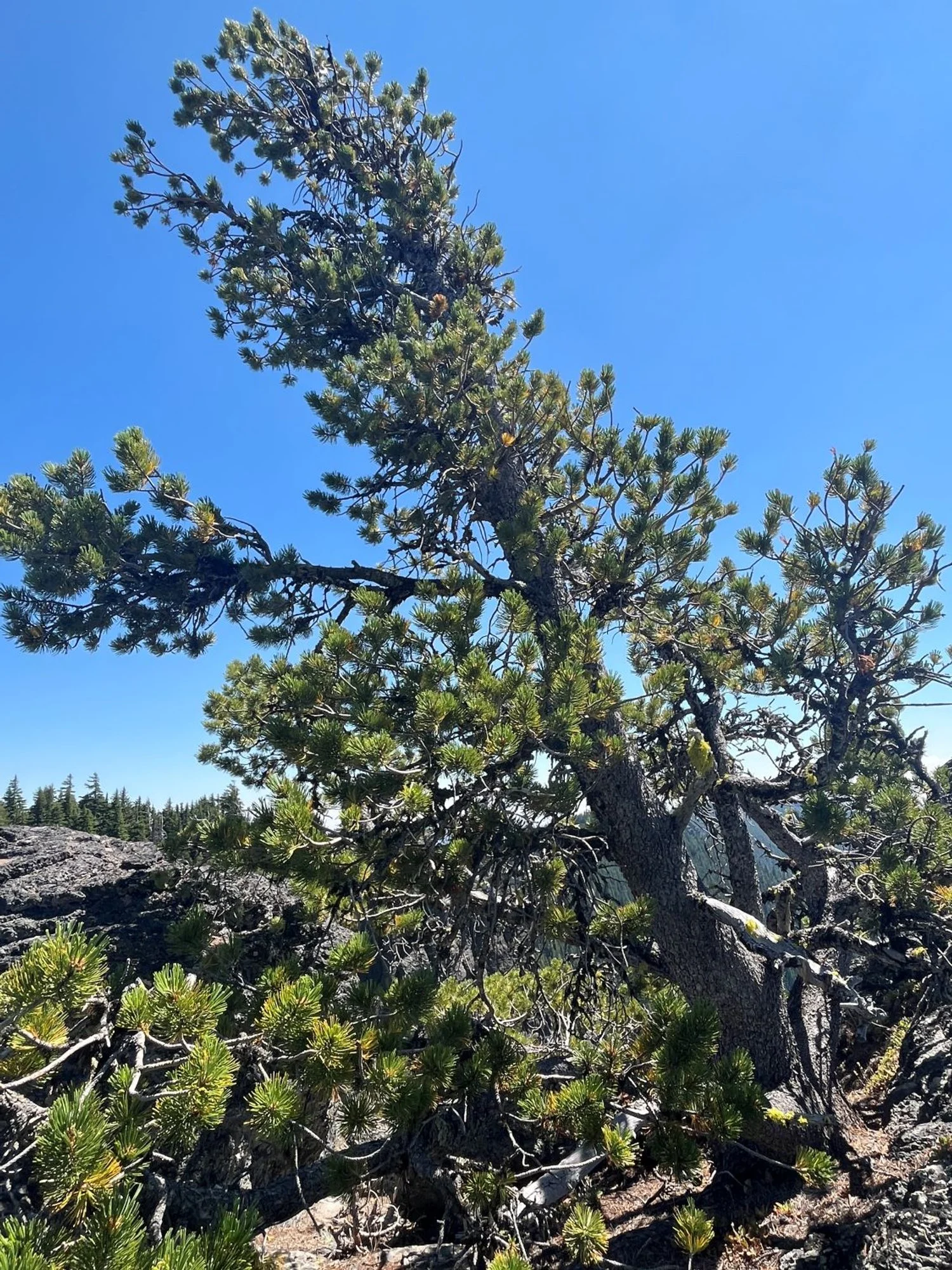
Whitebark pine
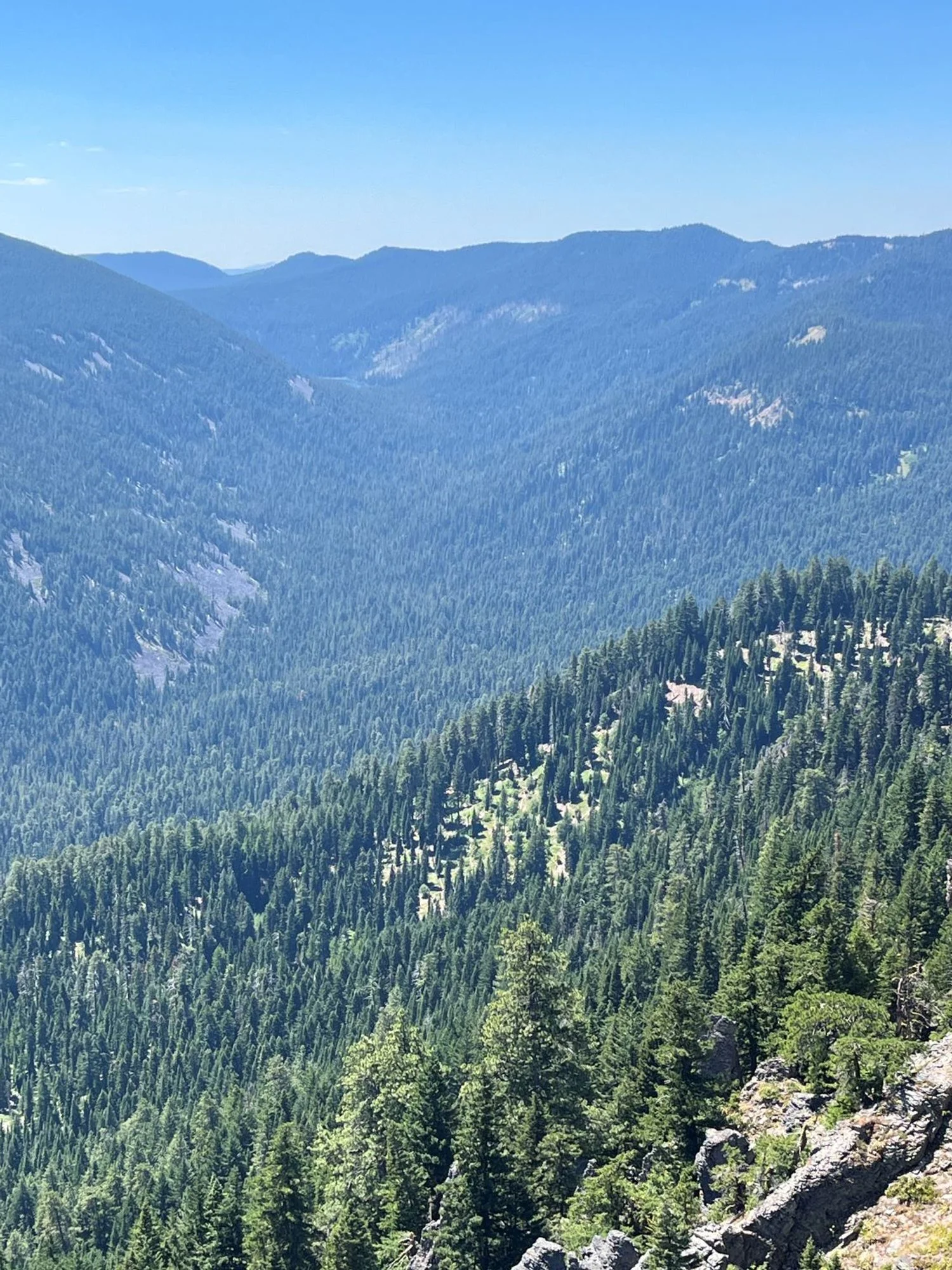
Upper Badger Creek Wilderness
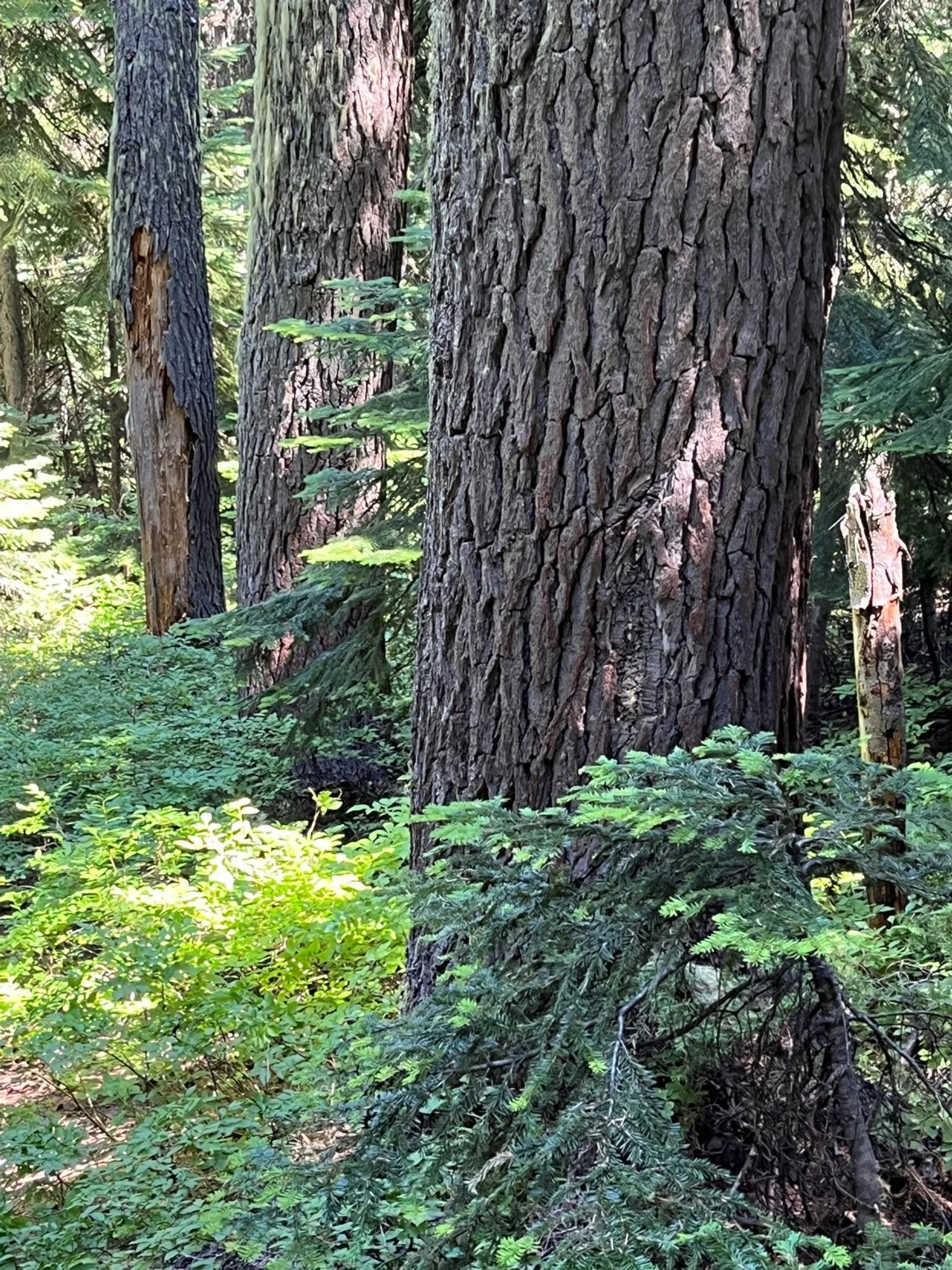
Mountain hemlock by the trail

Gnarly old larch
